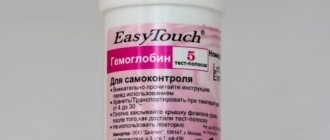120/80 is already a lot!
Alexandra Chizhova, AiF Health: Arterial hypertension is one of the main risk factors for heart attack and stroke. But if previously it was believed that there was no need to reduce blood pressure to 140/90, now cardiologists insist that this is hypertension. So what pressure is considered normal and when to take medications?
Alexander Myasnikov : Indeed, according to today’s views, normal blood pressure (BP) should not be higher than 119/78. Doctors already regard 120/80 as prehypertension, thereby emphasizing the fact that the risks of cardiovascular diseases begin to increase, at least slightly, at blood pressure of 120/80 – 129/80.
Pressure 130/80–130/90 is already hypertension, requiring intervention. However, if a person, in addition to high blood pressure, has no other risk factors for a heart attack, one can limit oneself to measures such as aerobic physical activity, weight loss, and diet. But if the patient is a smoker, if he is overweight, has high cholesterol and blood sugar levels, then he will have to take medications.
Every six months - ECG and once a year ultrasound. Examination schedule for hypertensive patients Read more
– Some older people consider high blood pressure normal for their age. And there is even an opinion that high blood pressure in the elderly improves blood supply to the brain. Do blood pressure targets really vary by age?
– This is a common misconception. In the elderly, even moderately elevated blood pressure (especially systolic - “upper”) is the most significant risk factor for heart attacks, strokes and, most importantly, senile dementia (dementia). Another thing is that the target values for reducing blood pressure in adulthood may be slightly higher than in youth - up to 130/80. But at the same time, blood pressure cannot be reduced sharply, otherwise the blood supply to vital organs may drop to a dangerous level.
– There is also a common point of view that medications against hypertension should be taken only in case of high blood pressure. And if the tonometer readings are normal, you shouldn’t stuff yourself with chemicals once again. How dangerous is this approach?
- Definitely dangerous! Arterial hypertension cannot be cured, the disease can only be controlled. These are like crutches for someone without legs: they cannot be used on Saturdays and Sundays and not used on weekdays. They are always needed! Why is the patient taking medication? In order for the blood pressure to be normal, this is the goal of treatment. And it is absurd, as soon as the goal is achieved, to cross out everything and stop taking medications. This leads to hypertensive crises, heart attacks and strokes.
Article on the topic
Surprises of cardiology. Fat does not harm blood vessels, but omega-3 acids are useless
What are the dangers of blood pressure surges?
Sudden changes in blood pressure for people over 60 years of age pose a greater danger than consistently high or low levels. They increase the load on the heart several times, accelerating its wear and tear, and provoke a hypertensive crisis, which can cause various complications, including myocardial infarction. Also, surges in blood pressure can cause cerebrovascular disorders, coronary heart disease, and stroke.
How to identify pathology?
A tonometer will help accurately diagnose changes. But they can also be identified by deterioration in well-being.
Blood pressure surges are accompanied by:
- Headache and dizziness;
- Alternating redness and paleness of the skin;
- Noise in the ears;
- The appearance of black dots before the eyes;
- Nausea and vomiting;
- Numbness of fingers;
- Cold extremities;
- Muscle tremors of the whole body;
- Tremor of the limbs;
- Slowing or increasing heart rate;
- Feeling of lack of air (shortness of breath);
- Aching or girdling pain in the chest area;
- Increased sweating;
- Severe weakness, fatigue and weakness (sometimes a person cannot even walk);
- Fainting and convulsions.
If such symptoms appear, it is necessary to measure blood pressure in both arms and monitor the readings for 2 hours, every 20-30 minutes.
How to treat the disease?
If an elderly person’s blood pressure fluctuates, then first of all he needs to see a doctor. The specialist will conduct diagnostics to determine the cause of the pathology, individually select medications, adjust the dosage, and take into account the presence of chronic diseases and contraindications.
It is recommended to keep a diary to note after what actions the blood pressure decreased or increased, which will help the doctor prescribe the optimal treatment.
Self-medication is only possible as an emergency, after which you should call a doctor. Otherwise, it can lead to serious complications and death.
First aid
What to do if the tonometer shows a strong deviation from the norm?
If blood pressure is high, you need to lie down in a comfortable position and relax. It is recommended to place a heating pad on your feet. If a person experiences chest discomfort, nitroglycerin should be taken.
If your blood pressure is low, you need to drink a cup of coffee, put a little salt on your tongue, eat a spoonful of sugar, or take citramone or a few glucose tablets.
If the pressure has returned to normal and the symptoms have not disappeared, then no additional measures need to be taken. The condition will soon be restored.
You need to lose weight gradually
– Does the treatment of hypertension always mean taking medications? Is it possible to normalize blood pressure in other ways?
– If the blood pressure is moderately elevated, before prescribing medications, they try to normalize it for three months by eliminating salt from the diet, losing weight, and exercising. And only if this does not help, we prescribe medications. If the patient comes in when his blood pressure level is constantly above 150/90, medications are prescribed to him along with diet and exercise.
– What products should definitely be on the menu of people suffering from cardiovascular diseases, and what should they definitely avoid? Is sugar really worse for the heart than fat?
– There are several nutritional rules for heart patients. The first is limiting the amount of calories to 1800 kcal per day. The second is “not to eat anything white” (that is, exclude salt, sugar, white bread, white rice, pasta). The third rule concerns fats - they should be either vegetable, or from seafood and nuts. Polyunsaturated fatty acids (from vegetable oil, sea fish, nuts) reduce “bad” cholesterol and increase “good” cholesterol. But sugar, on the contrary, reduces “good” cholesterol and increases “bad” cholesterol. But most importantly, sweets reduce “sensitivity” to insulin, and this is a direct path to diabetes and oncology.
– Another risk factor for cardiovascular disease is excess weight. How can a person lose weight if he already has heart problems? Is it worth playing sports or is physical activity contraindicated in this case?
– You need to lose weight correctly. That is, gradually. Set a goal of losing approximately 5% of your body weight every three months. Even with such a slow and seemingly insignificant weight loss, the risks of diabetes and heart attacks are sharply reduced. In addition, with gradual weight loss, there is no surge in hormonal activity, which can cause a slowdown in energy metabolism and an increase in appetite. And remember: the key to successful weight loss is not only limiting the number of calories, but also feasible physical activity; one does not work without the other!
Article on the topic
The disease of the dissatisfied. What symptoms indicate the onset of heart problems?
Doctor Myasnikov: why blood pressure pills don’t help and how to save yourself from hypertension
1) Demographic
Women live longer. Therefore, if a woman wants to live together “until death do you part,” she should be 10 years older.
In addition, there are always more boys than girls - after 40-60 years there is a shift towards “men are extinct”.
If the women in the families were older, this could have been avoided.
2) Sexy
A woman reaches her sexual peak later than a man. Then it goes down. Based on this, a man and a woman should not be the same age.
The best compatibility is an 18-year-old guy and a 32-year-old girl, and then in the same ratio.
Here we also note the erotic aspect.
Many men dream of an older woman. And women are starting to get the taste, fixing their gaze on young guys.
The age difference could make many people much happier sexually.
3) Social
It happens that a woman, having settled on the shoulders of an older man, stops developing. She no longer needs this. Many people simply spend time at home, watching TV and not working.
It would be hard to say that this is bad. The woman is protected and provided for. It would seem that there is nothing more important.
But a minus is a minus - she becomes dependent, both physically and mentally.
Where partners' salaries are equal, there are no such problems. A young guy encourages a woman to lead, solve problems and be independent.
4) Psychological
A mature woman with life experience will be more lenient towards her partner than a young girl. She will not restrict his freedom, ask for a golden palace and nag for no reason.
She will be more inclined to care and help each other.
5) Aesthetic
If a woman is with a man younger than her, this encourages her to keep herself in good shape. Agree, for the sake of a pot-bellied man who is 15 years older than her, she is unlikely to try so hard.
Another thing is joint trips to the fitness room or outdoors with a young gentleman.
6) Feminist
One of the main problems of modern society is sexism.
One of its vile manifestations is when evil tongues hiss that a woman who has achieved success owes this... far from her mental and professional qualities.
But this would be inappropriate if a woman has a young guy or a student on her balance sheet.
However, neither women nor men should be bothered by evil tongues and determine their preferences.
Based on materials from the lady 21 century portal. com.
__________
The information on the site is not a treatment guide. The site team strongly recommends contacting a specialized specialist if you suspect any disease. The information on the site is provided for informational purposes only.
Health, science and life, relationships, psyche, psychology, family, it’s interesting
Love yourself!
– Stress can also lead to heart attacks and strokes. But, unfortunately, it is impossible to completely avoid unrest. Recommend some ways to relax.
– Just comprehend the fact that yesterday has already passed, and tomorrow has not yet come. And with our worries we will not change anything, but will only harm our health. Loving people also means loving yourself. So do everything possible for your health, but come what may!
– Many people are used to relieving stress with alcohol. But at the same time, many doctors argue that there is no safe level of alcohol. Is it so?
- No. All over the world there are alcohol standards that are considered beneficial for the cardiovascular system. This is approximately 20 grams of pure alcohol per day. That is, a glass of strong drink, or a glass of wine, or a mug of beer. But the line is very thin - even a slight excess of the specified amount begins to act harmfully. The famous rule of Paracelsus: “Medicine and poison differ only in dose!”
Preventive measures
To prevent blood pressure surges, you must:
- Regularly monitor blood pressure using a home blood pressure monitor;
- Avoid coffee and strong tea;
- Minimize fat and salt content in food;
- Eliminate smoked meats, sausages, and canned food from the diet;
- Increase consumption of sea fish, vegetables and fruits;
- Do not give up physical activity, but it should be moderate (exercise, walking) so as not to strain the body;
- Get enough sleep at night and rest during the day;
- Maintain body weight at the same level;
- Do not take medications that quickly lower blood pressure, which can cause collapse due to rapid drainage of blood from the brain and lead to death (this recommendation is especially relevant for people over 90 years of age).
New views on arterial HYPERTENSION
At the end of the twentieth century, many positions on hypertension that were considered unshakable for many years were subjected to critical revision. New epidemiological data, new results from clinical trials and new evidence-based international standards have essentially challenged traditional ideas about hypertension. As a result, over the past 5-10 years, very significant changes have occurred in views on the origin, diagnosis and treatment of hypertension.
Etiology and pathogenesis of hypertension
First of all, it is worth noting the final recognition of the polygenic nature of essential hypertension, which means the need to consider it not only as a disease of chronically elevated blood pressure, but also as a complex set of interrelated hemodynamic, metabolic, and neurohumoral disorders. The following, modified illustration of Page's mosaic theory (Fig. 1), demonstrates modern understanding of the main pathogenetic mechanisms of hypertension. The practical significance of this scheme is to demonstrate the difficulty of selecting a single, even the most modern, drug that corrects disorders in all these mechanisms. It should be borne in mind the possibility of transformation of the disease from one variant to another, both as it progresses and under the influence of drugs. Looking ahead, we will say that this scheme confirms the need for combined antihypertensive therapy in most patients. The situation remains problematic, and despite the fact that we know a lot about the mechanisms involved, we do not have prognostic criteria to determine the path along which the development of hypertension will take place in a particular patient. Great hopes are associated with studying the genetic aspects of hypertension. Rare monogenic forms of hypertension have been identified. As for essential hypertension or hypertension, the most documented role of the genes of the renin-angiotensin system, in particular the angiotensinogen gene and its receptor, the ACE gene. Alleles 6A and 235T of the angiotensinogen genes are parameters used in a number of countries to determine genetic predisposition to hypertension.
| Figure 1. Mosaic theory of the pathogenesis of hypertension |
The α-aducine gene, the insulin receptor gene, and the transforming growth factor 1 gene are also significant. Noticeable advances have been made in gene therapy of experimental hypertension.
Next up is the epidemic of the metabolic variant of hypertension, also known as the “deadly quartet” or “modern lifestyle syndrome.” The main reason for this epidemic, as is clear from the latest definition, lies in the modern lifestyle with a decrease in physical activity and poor nutrition. This determines the extreme relevance of primary prevention of hypertension. Along with the “old” ones, so-called new metabolic risk factors are being actively discussed today. These include: uric acid, endogenous tissue plasminogen activator, estrogen deficiency, homocysteine, fibrinogen, coagulation factor VII, d-dimer, lipoprotein (a), C-reactive protein. Relatively new hemodynamic risk factors attract no less attention due to their significant role not only in the development of hypertension, but especially in the formation of its complications - for example, the higher the heart rate, the worse the prognosis. Experimental studies suggest the possibility of this exposure being atherogenic as a result of increased vascular stress. Pulse pressure is increasingly considered as one of the most informative integral indicators of blood pressure, especially in the elderly; and with the introduction of the method of 24-hour blood pressure monitoring, indicators such as blood pressure variability and nocturnal hypertension became available. Increased blood pressure variability and the lack of proper nocturnal blood pressure reduction means an accelerated rate of target organ damage and the approach of dangerous cardiovascular complications of hypertension. These factors retain their unfavorable significance even with normalized average blood pressure values. Speaking about what is new in the pathogenesis of hypertension, it should be noted that the focus has shifted from resistive arteries to large main vessels with the study of their distensibility/elasticity. Nowadays, the significant role of the endothelium and nitric oxide in the genesis of cardiovascular complications associated with hypertension is recognized. At the same time, increasing importance is being attached to the vascular endothelium and the search for drug effects on its impaired function. It is no coincidence that the vascular endothelium is considered, on the one hand, as the earliest target organ affected by hypertension, and on the other, as a source of increased blood pressure as such. Its main function is to maintain a balanced state of opposing processes, which regulates the state of the mechanisms that ultimately determine the progression of complications. This is vascular tone, synthesis and inhibition of growth factors, nonspecific inflammation, which determines the prognosis of hypertensive vasculopathy, and a significant effect on hemostasis and thrombolysis. Today, the alternative concept of the pathogenesis of hypertension, promoted in our country by Professor G. G. Arabidze, is sounding more and more convincing. According to this concept, the progression of essential hypertension is based on an imbalance between angiotensin 2 and nitric oxide with an excess of the former and/or a deficiency of the latter. When discussing modern views on the pathogenesis of hypertension, special attention should be paid to recognizing the role of nonspecific inflammation in the progression of hypertensive vasculopathy.
Blood pressure indicators
A new approach to the problem of hypertension is also associated with a change in views on blood pressure indicators. Within the framework of traditional concepts, hypertension was considered as a disease with a clear pathophysiological determinant in the form of an increased peripheral vascular resistance. The level of DBP was considered a sensitive marker of increased BPSS, which for many years dominated as a diagnostic criterion for the severity of hypertension and an indicator of the effectiveness of treatment. The introduction of the sphygmomanometry method into clinical practice at the beginning of the century - an outstanding discovery of its time - for many years narrowed the view of hypertension to blood pressure numbers. At the present stage of studying hypertension, the emphasis is on the levels of systolic blood pressure and pulse pressure (PP). The Framingham study put an end to ideas about the harmlessness of increasing SBP with age. Later, data on the high predictive value of SBP were confirmed in the SHEP and MRFIT studies. The validity of ideas about the harmlessness of low DBP levels is questionable. A recent analysis of the Framingham Study database revealed an inverse association between the incidence of cardiovascular events and DBP at any SBP level. An independent risk factor is PD. Its influence is especially pronounced in relation to coronary events and heart failure. Increased PP is also associated with a higher incidence of coronary atherosclerosis, strokes, lacunar infarctions, vascular dementia, and chronic renal failure. New versions of old techniques are used to measure PD. Next is the absence of age-specific blood pressure norms. Today we are talking about uniform blood pressure standards for adult patients. Traditionally, it is believed that the most difficult task is to correct the level of DBP, but as a result of large controlled studies, it turned out that SBP is more important. The benefits and safety of a significant reduction in high blood pressure have been proven. The HOT study convincingly demonstrated that in order to significantly reduce the risk of cardiovascular complications and truly solve the problem of antihypertensive therapy, the pressure must be reduced not by 10-12 mm Hg. Art., as we usually do, and to the target level, that is, 26-30 mm Hg. Art. The benefits and safety of treatment of hypertension and isolated systolic hypertension in the elderly and senile have been proven.
Target BP
Despite the apparent reduction in morbidity and mortality among treated patients with hypertension, the rates of cardiovascular morbidity and mortality in this group exceed those in normotensive individuals. This explains the recommendation for mandatory achievement of target blood pressure (Table 1). Target, or required, blood pressure is an innovation that significantly distinguishes modern standards of antihypertensive therapy. What can we say firmly and unambiguously? That the desired level of target pressure in the presence of concomitant diabetes mellitus should be less than 130/85 mm Hg. Art. and an even more pronounced decrease in the presence of chronic renal failure or severe proteinuria. But the issue with target blood pressure in uncomplicated forms of hypertension is not so simple, for which there is no data on the advisability of lowering blood pressure below the level of 140-150/90 mmHg. Art. Additional analysis of the Hypertension Optimal Treatment (HOT) trial, which has been highly debated and has become the basis for current recommendations to lower blood pressure below 135/85 mmHg. Art., did not confirm the beneficial effects of this level of achieved blood pressure in patients without diabetes mellitus. When we re-analyze and divide patients into two groups - with diabetes and without diabetes - we see that while there is a clear benefit in the group of patients with diabetes in terms of cardiovascular mortality and overall mortality, the dynamics in the group of patients without diabetes are the opposite, although statistically inaccurate direction. Therefore, today it makes more sense (safer) to talk about a target pressure of no lower than 140/90 mm. Hg Art. in uncomplicated cases of hypertension.
Diagnostic methods
Changing views on the nature of the disease and the mechanisms of its pathogenesis have contributed to the expansion of the diagnostic spectrum that we must use for a comprehensive assessment of a patient with hypertension. The method of 24-hour blood pressure monitoring has become firmly established in clinical practice. Modern standards define indications when this method is mandatory: high blood pressure variability, suspicion of white coat hypertension, symptoms of hypotension, refractory hypertension. For this method, standard indicators are clearly defined. In connection with the shift of interest from resistive vessels to main ones, there is a return at a new level to old, previously widely used diagnostic methods, such as measuring the velocity of pulse wave propagation and measuring central pulse pressure.
Hypertension and the practice of evidence-based medicine
The gold standard for informed approaches is the evidence base from multicenter clinical trials. In recent years, many large studies in hypertensiology have been completed, including those comparing traditional drugs (diuretics and β-blockers) with “new” classes of antihypertensive drugs.
In the history of “evidence-based hypertensiology”, three main periods can be distinguished: the 60-70s - the “golden” period, which gave a complete understanding of traditional drugs, including data on the effect of diuretics and β-blockers on endpoints; the subsequent 20 years - a “period of stagnation”, when, despite active clinical use, there was no data on the effect of ACE inhibitors and calcium antagonists on the end points; in 1995, the so-called “renaissance period” began, when about 40 major studies were launched to answer the most pressing questions of clinical hypertensiology.
Over the past five years, a number of large studies have been completed (Table 2). The long-acting dihydropyridine calcium antagonist nisoldipine has been demonstrated to be of value in the treatment of this common form of hypertension. As a result, this class of drugs, along with diuretics, is considered to be the drug of choice for the treatment of hypertension in old age. The use of lisinopril is also effective in treating this group of patients. This drug is effective in obese patients, as confirmed by the TROPHY study, and it also slows the progression of retinopathy (EUCLID study). Data from the EUCLID study also suggest that lisinopril reduces microalbuminuria (the study compares lisinopril and nifedipine). The HOT study demonstrated the value and feasibility of achieving target blood pressure, the need for a combined regimen of antihypertensive drugs, and the rationale for using low-dose aspirin in patients with normalized blood pressure for the primary prevention of coronary artery disease. The CAPPP, UKPDS LIVE STOP-HYPERTENSION 2 studies confirmed the high clinical value of traditional antihypertensive drugs compared to new ones. In addition, the following was established: the high value of ACE inhibitors for slowing the progression of complications of hypertension in diabetes mellitus (CAPPP), the paramount importance of normalizing blood pressure (exceeding the value of normoglycemia) to prevent the development of micro- and macrovascular complications of diabetes mellitus (UKPDS); advantages of the diuretic indapamide retard over the ACE inhibitor enalapril in the regression of left ventricular hypertrophy (LIVE); the feasibility of treating hypertension in the elderly using all major classes of antihypertensive drugs (STOP-HYPERTENSION 2).
High risk groups
As a result of epidemiological and controlled clinical studies, it became obvious: the higher the risk of developing cardiovascular complications in hypertension, the greater the benefit from rational, usually individually selected, antihypertensive therapy. As a result, the concept of high-risk groups and the so-called risk strategy emerged, based on individual selection of drugs in accordance with the individual spectrum of risk factors. Problem groups with a high risk of developing complications include: hypertension with kidney damage; hypertension in the elderly; hypertension in diabetes mellitus; hypertension in menopausal women; Hypertension and dyslipidemia. The increase in the incidence of chronic renal failure, including with treated hypertension, is one of the unresolved issues of modern hypertensiology. It has been established that the level of creatinine and the degree of proteinuria are the most valuable prognostic markers of the degree of risk of developing cardiovascular complications. Microalbuminuria has traditionally been considered a marker of renal involvement, while current data convincingly demonstrate that this indicator sensitively reflects both the degree of generalized microvascular damage and the degree of overall risk. This is evidenced by the close positive relationship between microalbuminuria and damage to the main target organs in arterial hypertension (Fig. 2).
| Figure 2. Microalbuminuria is an independent risk factor for cardiovascular complications |
Left ventricular hypertrophy is an independent powerful risk factor that significantly worsens the prognosis of hypertension. The data are encouraging that the implementation of a national program to combat hypertension in the United States, against the backdrop of a significant increase in the frequency of use of antihypertensive drugs, led to a significant decrease in both the prevalence of hypertension and LV hypertrophy in the population. The prevalence of LVH based on ECG criteria was almost halved. However, with regard to the group of patients with hypertension and LVH, the following questions have not yet been resolved: which class of drugs is most effective for regression of LVH; what factors determine regression of LVH (obviously there is no parallelism between the degree of blood pressure reduction and regression of LVH); what is the long-term benefit of regression of LVH; What is the reason for the increase in the incidence of heart failure in patients with hypertension?
The main attention in the practical activity of a doctor - due to the very high risk of complications - should be directed to the group of patients with hypertension and non-insulin-dependent diabetes mellitus. Already a slight increase in blood pressure to the so-called “normal high blood pressure” (SBP 130-139 and/or DBP 85-89 mm Hg) is the basis for drug therapy. In this group, aggressive treatment is indicated to achieve a target blood pressure of less than 130/85 mm. Hg Art. More and more data are accumulating on the benefits of ACE inhibitors in diabetes mellitus and hypertension, but in general the question of first-choice drugs in this large group of patients remains open. The question of the appropriateness of using calcium antagonists in this group is currently widely debated. On the one hand, there is data calling into question the safety of the use of now long-acting dihydropyridine calcium antagonists (ABCD, FACET, MIDAS studies), on the other hand, a significantly larger database in terms of volume and duration of observation obtained in the NOT, INSIGHT and SystEur studies does not confirmed these concerns and demonstrated the safety and high effectiveness of the use of drugs from this group. We will receive the final answer in the foreseeable future, when such major studies as ALLHAT, ASCOT, VALUE are completed.
New WHO-IAS recommendations
New WHO-IAS recommendations were adopted in January 1999. What are their fundamental distinguishing features? For the first time in many years, the fundamental positions of various international standards on hypertension have been agreed upon, a move away from the staged and qualitative approach has occurred, and patient stratification according to risk level has been introduced. Why should we, along with the blood pressure level, necessarily take into account the degree of risk? The more risk factors, the worse the prognosis for a patient with hypertension. With the same blood pressure level, but in the presence of risk factors, the occurrence of severe complications is approximately 20 times more likely than without these factors, while significantly different blood pressure levels with the same range of risk factors lead to complications only two to three times more often.
The emphasis on rational low-dose therapy is practically important. It has been shown that normalization of blood pressure requires an average of three to five medications in approximately three-quarters of patients. It has been established that all six classes of modern antihypertensive drugs effectively reduce blood pressure as monotherapy in only half of the cases. The HOT study demonstrated that 75% of patients required combination antihypertensive therapy to achieve target blood pressure.
Is this data new? In general, no. Having analyzed the database that we refer to when discussing the problem of hypertension, one can see that in most studies the frequency of combination therapy is very high (Fig. 3).
| Figure 3. Frequency of combination antihypertensive therapy |
Rational combination is based on compliance with two principles: drugs with different mechanisms of action and with a different spectrum of influence on tolerability should be prescribed. In table Table 1 shows rational, less rational and irrational combinations of antihypertensive drugs.
The objectives of antihypertensive therapy have undergone a significant evolution, and from the standpoint of current knowledge, it is necessary not only to reduce blood pressure, but also to influence the mechanisms of disease progression. The greatest hopes for solving this problem are associated with the class of drugs that affect the renin-angiotensin-aldosterone system.
Principles of drug therapy
What changed? When prescribing treatment, they are based on the degree of risk, and not just on the level of blood pressure. The choice of drug to initiate therapy should be made from six classes, including angiotensin-2 receptor antagonists. The tactics of step-by-step prescription of drugs gave way to liberal tactics or individual choice of antihypertensive drugs. Modern standards clearly define the criteria for the preferential class selection of drugs. Hopes for the next decades are associated with the active study of two classes of drugs: angiotensin-2 receptor antagonists and vasopeptidase inhibitors.
Despite significant progress in our knowledge of hypertension, many controversial and unresolved issues remain in clinical hypertensiology. Let's list some of them. Is it rational to start drug therapy for high normal blood pressure? Is it advisable to reduce diastolic pressure below 90 mm? Hg Art. in patients without diabetes? Is the reduction in cardiovascular morbidity and mortality caused by agents that block the renin-angiotensin-aldosterone system independent of blood pressure, as suggested by the HOPE study? Are there class-specific organoprotective effects? Is it reasonable to extrapolate data for individual drugs to group and class characteristics? Do new drug classes have additional impact on hard endpoints? Does antihypertensive therapy cause dementia? What is the carcinogenicity of antihypertensive drugs?
Etiology and pathogenesis of hypertension
- Recognition of the polygenic nature of hypertension
- Epidemic of metabolic variant hypertension
- New metabolic risk factors
- New hemodynamic risk factors - heart rate - pulse pressure - blood pressure variability - nocturnal hypertension
- Genetic determinants of hypertension
- Shifting focus from resistive vessels to main ones
- Recognition of the significant role of the endothelium and nitric oxide in the genesis of cardiovascular complications
- Recognition of the role of nonspecific inflammation in the progression of hypertensive vasculopathy
Combined antihypertensive therapy
Rational combination
- Diuretic + β-blocker
- Diuretic + ACE inhibitor
- ACEI + calcium antagonist
- β-blocker + calcium antagonist
- β-blocker + α1-blocker
Less rational combinations
- Calcium antagonist + diuretic
- β-blocker + ACE inhibitor
Irrational combinations
- β-blocker + calcium antagonist such as verapamil or diltiazem
- Calcium antagonist + α1 blocker
Endothelium: the main function is to maintain an equilibrium state of opposing processes
VASCULAR TONE
Vasodilators
- Nitric oxide
- Hyperpolarizing factor
- Prostacyclin
- C-type Na-uretic peptide
Vasoconstrictors
- Endothelin
- Angiotensin II
- Thromboxane A2
- Prostaglandin H2
GROWTH FACTORS
Stimulants
- Superoxide radicals
- Endothelin
- Angiotensin II
Inhibitors
- Nitric oxide
- Prostacyclin
- C-type Na-uretic peptide
INFLAMMATION
Stimulants
- Superoxide radicals
- TNF-A
Inhibitors
- Nitric oxide
HEMOSTASIS AND THROMBOLYSIS
Prothrombotic
- Inhibitor activator
- Plasminogen
Antithrombotic
- Tissue activator
- Plasminogen
Table 1. Target blood pressure
| Patient Population | Target BP |
| Diabetes | <130/85 mmHg Art. |
| Renal failure and proteinuria >1 g/day | <125/75 mmHg Art. |
| Essential | AH<140/90 mm Hg. Art. |
Return
Table 2. The largest studies in hypertensiology
| HOT | 1998 |
| SYST-EUR | 1997 |
| CAPPP | 1998 |
| UKPDS | 1998 |
| STOP-Hypertension-2 | 1999 |
| INSIGHT | 2000 |
Return
WHO/IAS Recommendations, 1999: main provisions
- Coordination of fundamental provisions with recommendations of PSC VI
- Moving away from the “staged” and “qualitative” approaches
- Stratification of patients by risk level
- Lower “target” blood pressure levels
- Replacement of the tactics of “stepped” prescription of drugs with “liberal” ones. Situations of preferential “class” choice of drugs have been established. Selecting a drug to initiate therapy from six main classes
- Emphasis on rational low-dose combination therapy
Blood pressure indicators
- Lack of age-related blood pressure norms
- Equivalence of SBP and DBP in the treatment of hypertension
- Shifting the focus from DBP to SBP
- Recognition of the leading role of SBP as a prognostic criterion for the development of complications
- Inverse relationship between DBP and the incidence of cardiovascular complications over 50 years of age
- Relationship between pulse pressure and the incidence of cardiovascular events
- Proven benefits and safety of significant reduction in high blood pressure
- Proven benefits and safety of treatment of hypertension and ISAH in elderly and senile age







